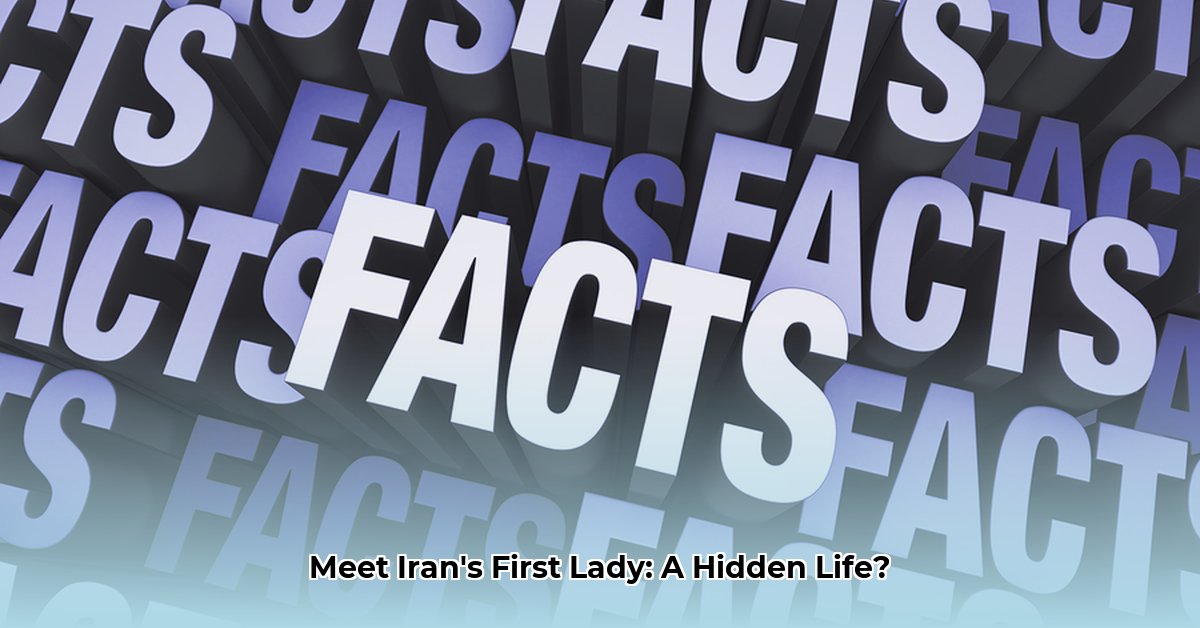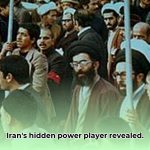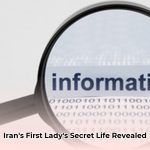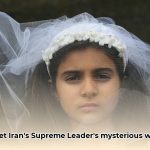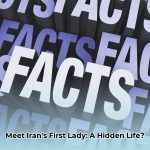Who is Mansoureh Khojasteh Bagherzadeh? The wife of Iran’s Supreme Leader is an enigmatic figure. While details of her personal life remain scarce, examining her background, public perception, and potential influence offers valuable insights into power dynamics and gender roles within the Iranian government. This article explores available information, comparing it to other political spouses, analyzing expert opinions on her public image, and attempting to discern her role (or lack thereof) in Iranian politics. Navigating the complexities of information control in Iran, we aim to uncover what we can about this influential figure, while acknowledging existing limitations and considering the future implications of her position. For a detailed biography, see her biography here.
Facts About Mansoureh Khojasteh Bagherzadeh: Understanding Her Background
Mansoureh Khojasteh Bagherzadeh: the name conjures an air of mystery. As the wife of Iran’s Supreme Leader, Ali Khamenei, she remains largely out of the public eye. This scarcity of information raises questions about her potential influence and role within Iranian society. Let’s examine what is known, and what remains shrouded in secrecy, regarding the First Lady of Iran and her political presence.
A Life Largely Unseen: Early Years, Family Life, and Religious Beliefs
Pinpointing precise details of Mansoureh’s early life is challenging. Records indicate she was born in Mashhad, a city rich in Iranian religious and cultural history. Her family, reportedly successful in business, was known for strong religious convictions. This background likely shaped her values; however, even her birth year is uncertain, with sources suggesting dates from 1945 to 1947. This ambiguity highlights the difficulties in verifying information about her upbringing.
Marriage to Power: Family Dynamics and Societal Influence
Mansoureh married Ali Khamenei in 1964, and they raised six children together. While these facts are established, the extent of her influence within the family and Iranian society is largely unknown. Did her family life grant her significant political power, or did she maintain a more traditional role, as many Iranian women do? The answer remains elusive, hindering a complete understanding of her family dynamics and influence.
A Private Figure: Public Image, Societal Norms, and Political Speculation
Mansoureh’s near-total absence from the public sphere is notable. Photographs are rare, and public appearances even rarer. This deliberate seclusion fuels speculation about her public image. Is it a preference for privacy, or does it suggest a behind-the-scenes role in Iranian politics? This enigma is crucial to understanding her life.
The Unseen Hand?: Behind-the-Scenes Theories and Interpretations
Some believe Mansoureh wields considerable behind-the-scenes influence, advising her husband on political matters. Others suggest her role is primarily domestic, and the secrecy surrounding her life reflects cultural norms emphasizing privacy. Without concrete evidence, definitive conclusions are impossible. The mystery itself is significant, revealing the limitations of available information and the range of potential interpretations.
The Challenges of Uncovering the Truth: Research Obstacles and Data Limitations
Researching Mansoureh’s life presents unique challenges. Iran’s political system often prioritizes secrecy, particularly regarding the Supreme Leader’s family. Cultural norms emphasizing discretion further complicate matters. These factors make obtaining reliable information extremely difficult. Existing sources often rely on hearsay, making independent verification a significant hurdle, limiting data availability.
Unanswered Questions: Areas for Future Research and Data Collection
Further investigation is needed to paint a more complete picture of Mansoureh’s life. Researchers could explore historical archives, though access may be restricted. Ethically conducted interviews, if possible, could offer valuable insights. Comparing her situation with other spouses of prominent political leaders in similar contexts may reveal useful parallels. Tracing her family’s connections to key political figures could help map potential influence networks. These steps are crucial for clarifying outstanding questions.
A Work in Progress: The Ongoing Search for Answers and Knowledge
Mansoureh Khojasteh Bagherzadeh’s life story is incomplete. While basic details are known, much remains hidden. The absence of information is as telling as any available detail. Understanding her life underscores the challenges of reporting on prominent individuals who avoid the public gaze. Future research must diligently verify existing accounts and seek fresh avenues of inquiry. Only then can we hope to develop a fuller, more accurate understanding of her life and role.
How to Trace Mansoureh Khojasteh Bagherzadeh’s Political Influence: Strategies and Methods
Key Takeaways:
- Limited public information hinders tracing Mansoureh Khojasteh Bagherzadeh’s influence.
- Her family connections and husband’s position are crucial starting points.
- Analyzing indirect influence through family networks is a key strategy.
- Cultural context and information restrictions in Iran present significant challenges.
- Further research on her family’s business dealings and social connections could provide insights.
The Elusive Influence: Assessing Mansoureh Khojasteh Bagherzadeh’s Role in Iranian Politics
Mansoureh Khojasteh Bagherzadeh, wife of Iran’s Supreme Leader, Ali Khamenei, remains a figure shrouded in mystery. While her life is largely private, her position inherently suggests some level of influence within the Iranian political establishment. But how to trace Mansoureh Khojasteh Bagherzadeh’s political influence remains a significant challenge due to her elusive societal role. What can we concretely say about her role assessing her influence on political decisions?
The Challenges of Research: Opacity and Controlled Information
The opacity of Iran’s political system presents a formidable obstacle. Information about the Supreme Leader’s family is tightly controlled and sensitive. This information scarcity makes assessing her influence difficult, which brings challenges of research. Unlike Western democracies, family ties often play a significant, albeit often unseen, role in Iranian politics. Therefore, understanding her family’s network is vital to understanding Iran’s societal structure.
Starting Points: Family and Connections within Iran
We know she comes from a religious, merchant family in Mashhad with key family connections. Her brother’s position with the Islamic Republic of Iran Broadcasting (IRIB) suggests family connections within the power structure. This familial network likely provides access to information and informal influence. Investigating this network’s extent and relationships is a critical aspect of how to trace Mansoureh Khojasteh Bagherzadeh’s political influence. Her father’s business dealings and social connections could hold clues to her potential indirect influence.
Indirect Influence: Subtle Power Dynamics and Family Values
Considering how to trace Mansoureh Khojasteh Bagherzadeh’s political influence requires acknowledging the possibility of indirect influence. Even without direct involvement in policy-making, her opinions could subtly shape her husband’s decisions. This is especially true given the importance of family and religious values in Iranian culture. The role of women within the Iranian elite is also a critical factor needing consideration; her opinions, even if unspoken, might hold significant sway within the family.
Methods of Investigation: Navigating Obstacles and Analyzing Data
Researching her influence demands creative strategies when navigating obstacles within Iran. Here’s a possible approach for the best methods of investigation:
-
Extensive Archival Research: Scrutinize Iranian news sources, looking for mentions of her attendance at events or interactions with other high-level officials. Any subtle indications of her presence or influence will require careful scrutiny.
-
Network Analysis: Map her family’s connections across business, political, and social spheres. This might reveal pathways through which she holds influence.
-
Open-Source Intelligence (OSINT) Analysis: Analyze social media and other publicly available information while acknowledging potential biases.
-
Expert Interviews: Consulting with scholars specializing in Iranian politics and those familiar with the Khamenei family could provide valuable qualitative insights.
It is crucial to emphasize that much of this research will explore potential influence, not necessarily direct evidence. The inherent limitations of publicly available information must be acknowledged.
Conclusion: An Ongoing Investigation and Societal Impact
Tracing Mansoureh Khojasteh Bagherzadeh’s influence is a challenging yet crucial task. It requires a multi-faceted approach and an awareness of the unique context of Iranian politics. This investigative process is ongoing, requiring patience, rigorous methodology, and a commitment to understanding the complexity of power dynamics within the Islamic Republic.
